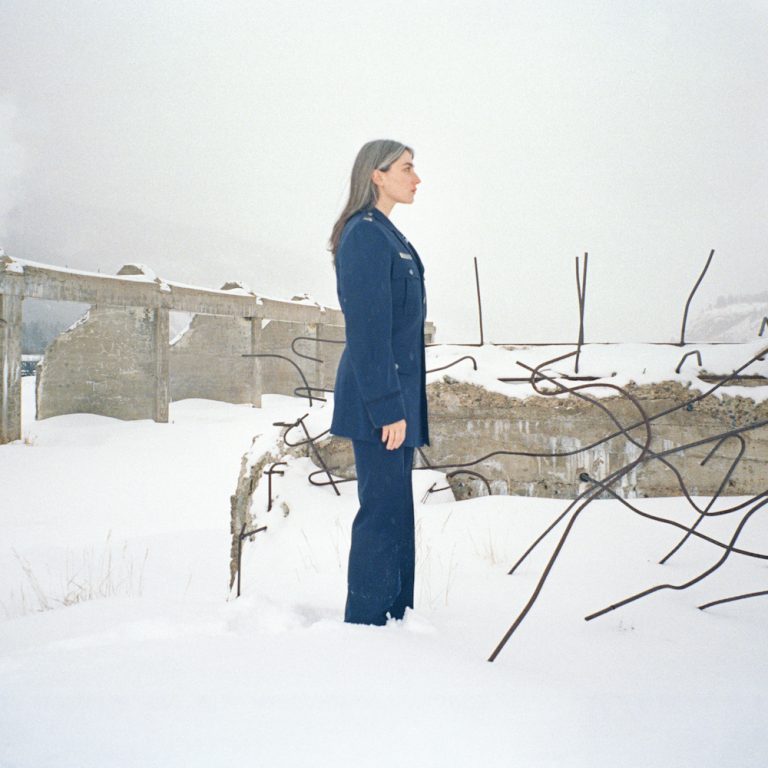If pop points to the moment at hand, drone alludes to the epoch. Pop shouts carpe diem; drone signals the sky, reminding us that humanity occupies a fraction of the cosmic narrative. Pop flirts, grabs. Drone is seductive in its own way, but often requires a recalibration, demanding patience and inquisitiveness regarding processes that unfurl slowly and gradually. Also, if pop is about feting the world, the miracle of the exterior, drone is meditative, about attunement with self/Self, diving into the unfolding layers of interiority.
With her 2023 album, Does Spring Hide Its Joy, Kali Malone created stunning movements, often with single notes – manipulating volume, morphing and splitting tones, adding and removing accents and counterpoints. Intonations swelled and shrunk, crested and vanished. Supported by cellist Lucy Railton and Sunn O))) guitarist Stephen O’Malley, Malone conjured the birth and demise of solar systems and galaxies. Her tracks metaphorized evolution, the proliferation and extinguishment of life – invoking the 13.7 billion-year arc of the universe.
With 2022’s Living Torch, too, Malone extracted sublime evocations from minimal expressions. She emphasized her affinity for collaborative dynamics, the second track of the two-track project employing her most arresting range of sounds. 2019’s The Sacrificial Code, on which she adeptly honed her signature organ performances, also displayed innovation, Malone ever conscious of progression, transition, and the interplay between longevity and ephemerality.
Malone’s new sequence, All Life Long, alternates between tracks composed for voices, organ, and brass. Featuring the Macadam Ensemble (conducted by Etienne Ferschaud) and New York’s Anima Brass, along with the reliable O’Malley, the project often trades depth for breadth. “No Sun to Burn (for brass)”, for example, spotlights Anima Brass as they navigate a three-minute excursion, working with drones as well as assorted harmonies. Toward the midway point, strident notes provide a welcome frisson. “Retrograde Canon” further develops the salient qualities of “No Sun to Burn (for brass)”, mining contrasts between higher and lower pitches and making use of ascending and descending melodic lines. “Formation Flight” taps into soft jazz templates, bright notes mixed and well-blended, melodic lines again scaled and rappelled.
On the title piece, Malone revisits the organ à la The Sacrificial Code, though she makes less use of pitch and tonal variations. From a philosophic perspective, she adopts an austerely naturalistic MO presumably stripped of artifice, including stoking tensions and providing catharses. With “Passage through the Spheres”, meanwhile, soprano, tenor, and baritone voices intermingle and complement one another. Harmonies and phrasing are intriguing, each voice pursuing its own melodic and tonal trajectory while contributing to the overall tapestry. “Slow of Faith” is more overtly ecclesial in its tone and structure, the voices more dramatically delivered, crystalline parts merging and individuating.
“Fastened Maze (for organ)” works with protracted notes followed by quick shifts. It’s as if Malone is asking, who are we in the face of repetition? Do we associate hope with change? What is our relationship to stasis? “No Sun to Burn (for organ)” unfurls similarly, though the contrast between high and low pitches establishes a stirring juxtaposition. “The Unification of Inner and Outer (for organ)” shows Malone hopscotching from drawn-out note to drawn-out note. One might consider this to be Malone’s version of mindfulness practice, a way of “removing the performer and performance”, aspiring to an ego-less manifestation.
Many of All Life Long’s tracks bring to mind a Society of Friends gathering, how the group will sit in silence until someone “feels the light”. While Malone is working with repetition more than silence, she is likewise comfortable with radical recurrence. In this sense, the project is alluring on a meta level à la John Cage’s 4’33” or Robert Raushenberg’s “blank” canvases. Having an aesthetic or visceral experience, however, ironically requires a cerebral reframing. At times, Malone’s “magic eye” seems elusive. Other times, it comes gloriously into focus, shimmering like an elegant mirage.

